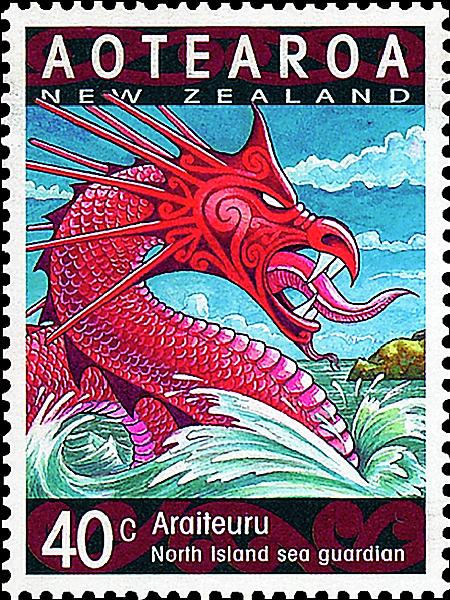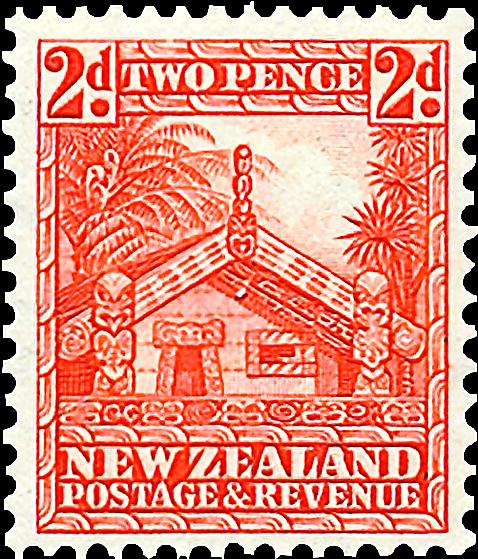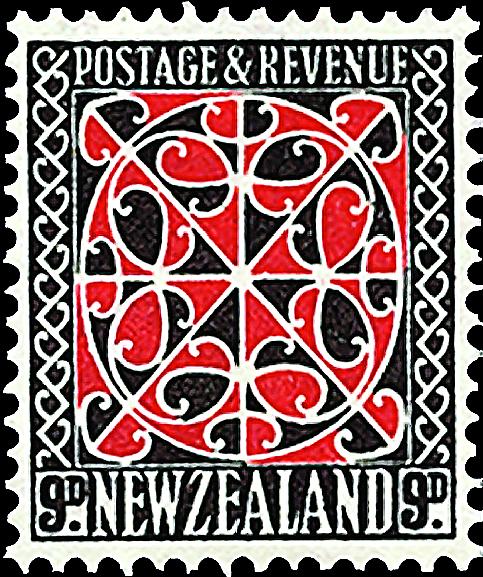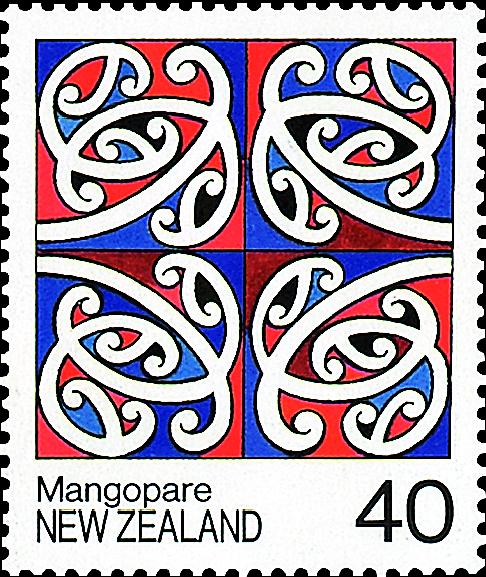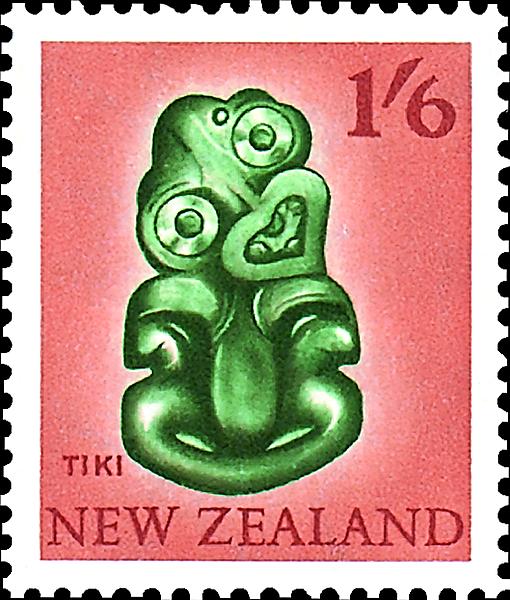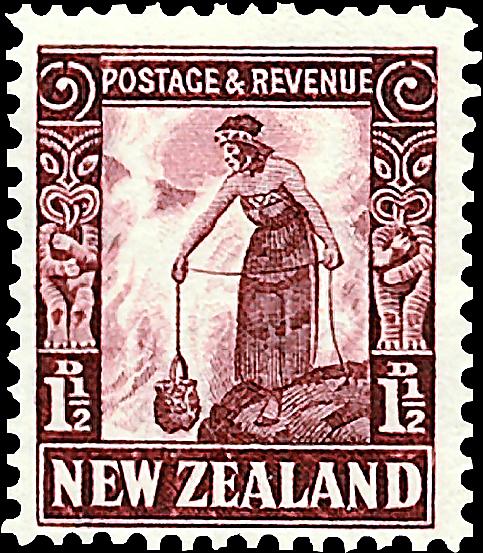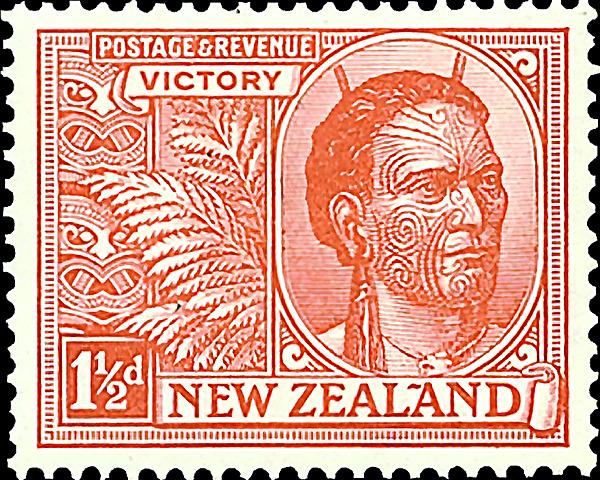World Stamps
Maori design influence found on many New Zealand stamps
The Maori people are indigenous New Zealanders who populated the island nation from Eastern Polynesia in the 13th century. They arrived in voyaging canoes just as other Polynesians populated far-flung islands throughout the North and South Pacific.
Unlike those tropical islands, New Zealand has a temperate four-season climate and many natural resources that coral and volcanic islands did not provide.
The Maori (pronounced mau-ree) culture evolved as the Maori learned to utilize the hardwoods, animals, plants and minerals found in their new homeland they called Aotearoa: “land of the long white cloud.”
The artistry of Maori crafts has favorably impacted New Zealand’s postage stamps.
The first undeniably Maori design elements can be found on New Zealand’s World War I Victory issue of 1920. Figure 1 illustrates a 1½-penny stamp (Scott 167) with Maori face wood carvings (called “whakairo”) along the left side of the stamp.
The primary vignette (central image) is a Maori warrior with a traditional face tattoo called “ta moko.” The stamp was issued to honor the volunteer Maori Battalion that fought in all the New Zealand actions during WWI.
Many aspects of Maori design can be found on pictorial definitive stamps issued in 1935. Carved tikis flank both sides of a Maori woman lowering a food basket into a boiling spring on the engraved 1½d stamp shown in Figure 2 (Scott 187).
By the 1960s, Maori design became the primary focus of some stamps. Figure 3 shows a tiki carved in greenstone on a 1 shilling 6d stamp issued in 1960 (Scott 345).
Such stone carvings are called “hei-tiki.” Once the stone is carved and polished, it is secured to a plaited fiber cord and worn around the neck.
Maori buildings have distinctive exteriors and interiors. Their meeting houses, called whare, have heavily carved supports, door frames and beams. Interiors are boldly decorated with painted symbols.
New Zealand issued a set of four stamps in 1988 depicting Maori rafter paintings. The 40¢ stamp in Figure 4 (Scott 894) shows a whare rafter painting using the mangopare symbol that represents strength and courage as well as love and friendship.
This stamp is reminiscent of the 9d stamp issued in 1935 printed in black and red (Scott 195). That stamp, pictured in Figure 5, shows a door panel using the Maori kowhaiwhai pattern that is traditionally painted only in black, red and white.
Legend attributes the kowhaiwhai painting to three builders who were seeking carvings for their house. A Maori god told the builders they could not use carvings and must instead use painted designs. The kowhaiwhai scrolling patterns evolved and not only decorated buildings and boats, but also inspired tattoo patterns.
A Maori meeting house appears on the 1935 2d stamp pictured in Figure 6 (Scott 188). It is protected by two carved tiki posts and is decorated with carved beams.
In 2000, New Zealand found an interesting way to combine the lunar new year with Maori legend by issuing the 40¢ Year of the Dragon stamp shown in Figure 7 (Scott 1629).
The image is Araiteuru, a guardian monster that is said to have arrived in New Zealand with the early voyaging canoes. Araiteuru bears the Maori scrolled facial tattoos.
“Aotearoa,” the Maori name for New Zealand, takes priority as the country name at the top of the stamp, with “New Zealand” below it in much smaller type.
The Maori influence on New Zealand’s postage stamps gives the stamps an exotic quality and an ethnic identity.
Looking for Maori elements while collecting New Zealand stamps makes collecting that much more interesting.
MORE RELATED ARTICLES
Headlines
-
Postal Updates
Oct 7, 2024, 5 PMUSPS plans to raise postal rates five times in next three years
-
US Stamps
Oct 7, 2024, 3 PMMcMurtrie dismissed as APS education director following Sept. 21 arrest
-
US Stamps
Oct 7, 2024, 12 PMVasiliauskas named president of Mystic Stamp Co.
-
US Stamps
Oct 6, 2024, 5 PMApgar souvenir card available
